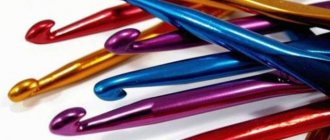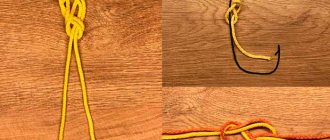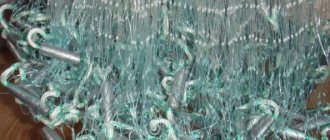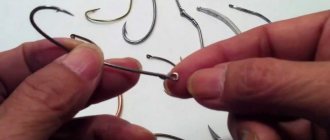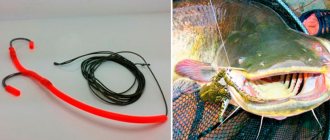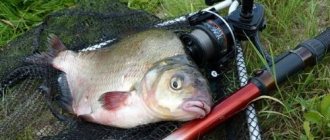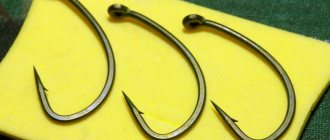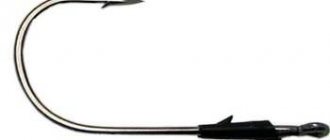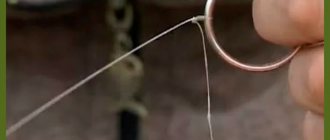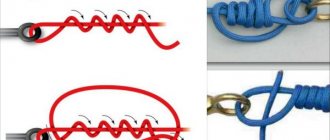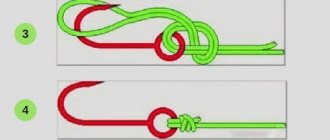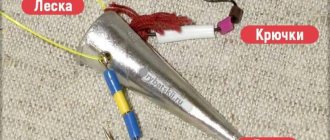A crochet hook, in its traditional form , looks like a thick needle.
Previously, they were made of steel or wood, but today the industry produces both aluminum with enamel coating and plastic. There are hooks that are made in combination: the handle is made of plastic, and the hook itself is made of metal. These hooks are popular in Japan, they are somewhat shorter than our hooks. Sometimes they are very comfortable in the hand and in work, and sometimes the hook bed is not made correctly and it is not convenient to work with such a hook.
The thinnest hooks are made of steel. They are specially made to be very durable. They should not bend or break. Moreover, even a thin steel hook has a decent weight, so they are comfortable to hold in your hand. The same hooks are used for knitting with beads.
Very thick hooks, usually plastic, wood or bone. They should be light, since it is assumed that your knitted item is no longer small if you choose a large hook.
Today there are hooks with a so-called ergonomic handle. There are two options: either it will be really comfortable for you to knit and it will seem to fit in your hand, or for you it will only be a marketing ploy.
You should definitely try these hooks at work, preferably more than one, so that you can understand for yourself whether they are good for you or not.
What is a crochet hook made of?
A classic crochet hook, especially short. And this is not obvious, since there is also a long hook.
One of its ends is bent with a hook. The tip of this hook, called the head , is rounded.
There is also the concept of the barb of the hook - this, one might say, is the bend of the hook.
With the head of the hook we pierce the knitting fabric in the right places, and with the barb of the hook we pull the thread through to create the desired weave of threads, in accordance with the chosen knitting pattern.
Most often there is a small finger area on the hook. In today's conditions, manufacturers often write the hook size on it. This area is called the hook bed . For good hooks, it is specially centered so that the head of the hook points exactly at the knitter. And bad manufacturers have no idea why it is needed.
Double-sided hooks for classic knitting are available . They have different hook sizes on each side. A distinctive feature of such hooks is the presence of a hook bed on each side. Another option is when the hook bed is simply lengthened.
How to choose the right hook for light bait
photo by Andrey Yanshevsky
For fishing you need a fish, a fisherman and a hook. Passions about choosing and purchasing hooks have generally subsided. Most anglers choose one or another specific type and size of hook that they are used to or have been recommended to use.
The mistake is that many people use the same hooks in all fishing situations. In the best case, the hook is changed in size, depending on the size of the bait (this is correct), or on the size of the intended prey (a very common, but not correct approach).
Beginning fishermen still “fall for” the advertising ploy and buy hooks “for carp”, “for crucian carp”, “for bream”, which is understandable, but not true. This way, the angler will never choose the optimal hook for specific fishing conditions.
For example, you catch crucian carp in the summer with a worm, dough, bread, corn, using relatively large hooks, and in the fall the crucian carp begins to peck only on bloodworms, which cannot be placed on a large and thick hook. And the fisherman, instead of tying another hook, simply stops catching crucian carp, and this is not a joke, since I myself, offering bloodworms in such situations, listened to the words that the fisherman cannot put a bloodworm on his hook.
When I offered a suitable hook, the fisherman skeptically noted that crucian carp were not caught with such hooks. And this despite the fact that, sitting next to me, I caught crucian carp one after another. The size of the hook is determined solely by the size of the bait.
| One of the lightest sports hooks. Photo by Andrey Yanshevsky |
If you are fishing with bloodworms, then the maximum hook size is 16; if you are using maggots, then take a hook with a size up to No. 14. For worms, hooks No. 8-10 are more suitable. For the bark beetle - No. 10-14, and for the caddisfly - No. 8-14. Hooks No. 14-18 are suitable for the bread crust, and 14-16 for the “chatter”.
I assure you that it is not particularly difficult to “bring out” bream by 2-3 kilos on hook No. 16-18. There is another "ambush". The sizes of hooks in millimeters of the same number, but from different manufacturers, can vary greatly. In the same way, hooks of the same number, from the same brand, but of different shapes, differ in size.
The most common “disease” of anglers is that many are “afraid” to use small hooks even in cases where they realize their necessity.
The reason lies in the fact that for some reason such fishermen believe that the larger the hook, the less likely it is that it will hook the fish better and will not break or straighten out. Yes, a larger hook made from thicker wire is stronger than a smaller one.
However, when the hook catches on the fish and the hook begins to bend, the difference in absolute strength is leveled out, since a smaller hook has less leverage. But “hookiness” depends more on the sharpness of the sting, on how the bait is set and on how the hook is tied. It is appropriate to say here that recommendations to “hide” the sting in the bait inevitably lead to empty hooks.
Small hooks have a significant drawback. They are more difficult to extract from fish. You also need to take into account that there are times when you have to plant not one or two bloodworm or maggot larvae, but 10 or more pieces each.
In such cases, naturally, a larger hook is taken. The above is the ABC, but there is one more parameter, the meaning of which not many people think about. This is the hook's own mass.
| Hooks for the smallest baits. Photo by Andrey Yanshevsky |
If the hook is small in size and the bait is heavy, then this parameter does not matter. But, if the bait is small and light, and the fish is extremely cautious, then the weight of the hook, or more precisely, its share in the weight of the bait, can radically affect the fishing results.
As an example, I will give the option of catching bream in the “dead winter” using a finely tuned float rig. During very careful biting, in conditions of no current or very weak current, a rig is used in which the leash is extended to a meter. This is done in order to play with bait.
The fisherman periodically quickly raises the fishing rod and just as quickly returns it to its original place. In this case, the bait on a long leash hangs in the water column and sinks very slowly. That is, wiring is implemented “for the fall of the bait.”
In order to deceive large fish, a fishing line with a diameter of 0.08-0.09 mm is used, and one or two bloodworm larvae are used as bait. And in this case, the hook’s own weight can become a very important factor, which will determine how naturally the bait “sinks.”
Hooks from the same Japanese company, number 20, but of different series, weigh from 4.1 to 11.3 mg. The larva of a large bloodworm weighs about 35 mg in air. Since the density of bloodworms is very close to the density of water, the weight of the larva in water does not exceed 3 mg, which is comparable to the weight of a thin wire hook.
I must emphasize that the red “bloodworm” hooks with an elongated shank, beloved by many anglers, in this case turned out to be the heaviest and, from the point of view of effective pulling of the bait to fall, are the most unsuitable for bloodworms.
So, I came to the conclusion that a light hook with one bloodworm larva can be played without even raising the winter float rig high. Sometimes it is enough to lift the fishing rod fifteen to twenty centimeters, and after a few seconds there will be a confident bite from the bream.
Andrey Yanshevsky August 9, 2021 at 10:13 pm
What to look for when choosing a crochet hook
It is important that the hook does not bend
In the case of uncoated aluminum versions this may occur. Sometimes plastic and bone hooks also bend. To prevent this from happening, they do not make a hook bed.
If in the process of learning to crochet you realize that your knitting is quite dense, then such a hook will definitely not suit you. Therefore, it is better to replace it immediately at the beginning of training, otherwise you will break it anyway.
Wooden hooks
Be very picky when choosing a hook that is made of wood, and now bamboo is also a popular material. When choosing such hooks, make sure that there are no burrs on them. It is impossible to work with such a tool and, by and large, no sandpaper will save you. Burrs will still form on such a hook.
In my opinion, wooden and, to a greater extent, bamboo hooks slip less. And this is an important point, since we have to pull through the loops and the hook slides in the loop all the time. It is difficult to do this with a poorly sliding hook and the knitting process itself begins to irritate.
Make sure the hook fits comfortably in your hand
Find exactly your hook, which is convenient for you to work with. Don't look at the prestige or popularity of the brand. And the cost of the hook does not determine anything - look for “your” hook.
Often, with your “favorite” crochet hook, you can knit almost any item and, in general, with any thread, just by adjusting the thread tension. But this happens when you have a lot of knitting experience. Therefore, for now, choose a convenient hook for each item and thread.
Most likely, you will have hooks from different manufacturers in your arsenal for different jobs.
“favorite” crochet hook is almost always with you: when traveling, at the dacha, you show something how to crochet it with your “favorite” crochet hook . If it breaks, you don't buy a new one, you fix the old one, by any means necessary. Nonsense - but this happens in fact, I asked many knitting masters.
“Favorite” and very convenient crochet hook, after repairs
Choosing a quality hook
The fishing result very much depends on the quality of the hook. Therefore, you need to learn how to find low-quality samples while still in the store.
There are a number of companies that are distinguished by the high quality of the equipment they produce. Many fishermen, due to the lack of complaints, give their preference to the following brands:
- American Owner;
- Norwegian Mustad;
- Japanese Gamakatsu.
Excellent hook patterns should not break or bend when subjected to force. Just try to bend it. This method checks the quality of heat treatment.
It is worth paying attention to the sharpness of the sting. We can check it using the old method. Run the tip of the hook over your nail or plastic surface that you don't mind. If there is no small scratch, and it simply slides along the surface, then you should not take such a hook.
When choosing hooks, a fisherman cannot save money, since he has to pay for quality. A high-quality hook will give you the opportunity to come home with an excellent catch and mood.
Numbers and sizes of hooks
Hooks come in different thicknesses and it determines its number. In the Russian system of measures, the numbers of hooks coincide with their thickness. The sizes of crochet hooks correspond to different types of knitting threads. When the hook and thread fit together, the thread is equal to the thickness of the place at the hook barb (the thinnest place at the hook).
You can simply measure this thickness:
- grab the thread with a hook;
- stretch it and conclude:
Conclusion:
If the thread does not fall off the hook, then it is the correct hook for that thread.
If it falls off, then you need to select another hook for this thread, since it is thick for this hook.
The hook is too small for this thread.
Either we change the hook or select a different thread for this hook.
It is also possible that we knit with this particular thread and with this particular crochet hook we will get a looser knitting.
The thread should be flush with the hook barb.
Below in the table I will give very approximate recommendations for choosing a hook in accordance with the threads with which you are going to knit.
Approximate correspondence table for crochet hooks and threads
| Metric hook size, mm | Hook number, № | US marking | Recommended threads |
| 0,50 | 14 | Very thin | |
| 0,60 | 12 | cotton threads, | |
| 0,75 | 10 | for example, sewing | |
| 0,90 | 8 | threads, darning, | |
| 1,00 | 6 | bobbin thread number 10. | |
| 1,25 | 4 | Thin | |
| 1,50 | 2 | cotton threads, | |
| 1,75 | 0 | for example, floss. | |
| 2,0 | 2/0 | B | Average thickness |
| 2,30 | 3/0 | threads, for example, | |
| 2,50 | 4/0 | C | iris, narcissus, violet. |
| 3,0 | 5/0 | D | We knit socks, knee socks, children's items, summer |
| 3,50 | 6/0 | E | things, amigurumi toys. |
| 4,0 | 7/0 | F | Thin thread , for example, |
| 4,50 | 7,5/0 | G | we knit children's things, |
| 5,0 | 8/0 | H | sportswear, summer models. |
| 5,50 | 9/0 | I | Double fluffy thread , for example mohair. |
| 6,0 | 10/0 | K | We knit shawls and scarves. |
| 7,0 | 7 | – | Tapestry wool or double wool thread . |
| 8,0 | 8 | L | We knit winter things. |
| 9,0 | 9 | M | Thick twisted |
| 10.0 mm=1.0 cm | 10 | N | yarn. |
| 11.50 mm | P | ||
| 12.0 mm=1.2 cm | 12 | ||
| 15.0 mm=1.5 cm | 15 | ||
| 15.75 mm | Q | ||
| 19.00 mm=1.9 | S | ||
| 20.0 mm=2.0 cm | 20 | Cords. We knit carpets. |
The table shows that the marking of crochet hooks differs between us and the English-speaking knitting community.
In particular, the British and Americans have their own special name for thin steel hooks - Steel Crochet Hooks.
At the same time, ordinary hooks, since they can be made of different materials, do not have the word “steel” in their name, that is, they are simply called Crochet Hooks. Moreover, both hooks have their own tables of numbers.
Both Europeans and Chinese use numerical values. But there are nuances here.
Hooks from different manufacturers and made from different materials vary in shape and size.
Practical experience
Special case
The same hook number from different manufacturers may not be exactly the same size and may differ up or down.
This statement is very relevant for Chinese goods: there, almost every manufacturer introduces its own labeling, which, as a rule, does not correspond to the international one. For example, good CRON hooks are metal and fit well in the hand, but their number 1.75 is our number 2.00 or 2.50. Therefore, when getting started and choosing a hook recommended in the instructions for a knitting pattern, it is best to knit several small samples with different hooks to make sure that the pattern turns out exactly the way you would like it to be, both in terms of knitting density and pattern size .
I also draw your attention to the fact that the numbers of thick hooks and thin ones have completely different numbering logic, and their marking step is different.
The thinnest hook is 0.50 mm, and its number will be No. 14 . Further, in steps of two, the numbers will decrease to No. 0 .
Our ordinary hooks, for the most part, have a pitch of 0.5 mm, but 0.25 mm is also found. By and large, when knitting simple regular items, this is so unimportant that take the hook closest to the recommended one. These nuances are important if you knit with very thin threads and at the same time you need one of the thin hooks.
Hook structure
Hooks are made of stainless, steel and carbon wire with a bronze (for freshwater fishing) or nickel (for saltwater fishing) coating. The hook consists of a head, shank, bend (hook), sting and barb. The sizes of these parts may vary.
Selecting a Hook The choice of hook to equip your float rod with depends on both the type of fish you intend to catch and the size and type of bait. The larger the bait, and therefore the larger the fish that bites on it, the stronger and larger the hook should be. Since the choice of hooks is currently huge, it is better for you to purchase different gear so that you can use the right one in a certain situation. It is most convenient to hook with a hook that has a straight bend in the forehead. The hook tip should be sharp and long enough. A high-quality hook both bends and breaks, so when buying tackle you need to try to straighten it by lightly pressing on the mouth. Do not buy hooks that only unbend or only break.
As practice shows, a short hook tip is almost always not sharp enough. Be sure to pay attention to the cross section of the hook. It is best if the hook at the back of the head and forehead is I-beam in diameter, and its ring and shank are round. In this case, the back of the head and the forehead of the hook, which bear the main load, should be somewhat thicker than the fore-end. The fish will be less likely to break if the barb of the hook is relatively thin and the angle of its inclination to the forehead is medium. The length of the hook shank depends on the type of attachment. If you use animal baits, equip your fishing rod with a hook with a long shank, and if you use plant baits, with a short shank. A hook with a short shank is not visible under the bait, and the fish are not afraid of it. However, prey often falls off such a hook. Attaching the Hook There are three main ways to attach a hook to a fishing line.
Rules for choosing crochet hooks
The rules for choosing the number and material of a crochet hook depend on several factors:
- the thickness of the yarn you will knit with;
- type of yarn (cotton thread, synthetic, mohair, wool, cord, etc.);
- the type of product you will be working on;
- and, most importantly, your knitting style , that is, whether you knit tightly or loosely.
Table of possible selection of numbers of hooks from Chinese manufacturers and our threads produced by the plant named after. S.M.Kirova, St. Petersburg
| Threads | Hook size |
| "Snowflake" | 0.90 mm – 1.10 mm |
| "Lily" | 1.00 mm – 1.20 mm |
| "Iris" | 1.25 mm – 1.30 mm |
| "Narcissus" | 1.50 mm – 1.75 mm |
| "Lotus" | 1.75 mm – 2.00 mm |
As a rule, when we start knitting, we already know what product we will knit - this is the first thing we decide for sure. Next comes the choice of threads: which ones we liked by touch, by color, and then we evaluate whether these threads are suitable for us in terms of their properties. And now we have decided on three points, and the question arises: which hook to choose for knitting this work. This choice should take into account our individual knitting characteristics.
Choosing the right hook will help you adjust your knitting style
From practical knitting experience
It is not necessary to blindly follow the recommendations for a product or a knitting pattern and knit only with the specified hook number. Before starting any knitting, always take the time to make a sample using different threads and different hooks, or just different hooks if you have already decided on the threads.
Knitting is a creative and leisurely process
Choose the hook that you feel comfortable crocheting with.
Knitting is not a quick process, therefore, if you choose a hook that is not suitable for you, you will experience constant discomfort and, every time you make the next loop, remind yourself that you need to knit looser, or, conversely, tighter, or smoother. You’ll just get tired of constantly pulling yourself together, and you won’t get any pleasure from creating your own thing with your own hands. Therefore, after some time you will not finish what you started and abandon your “masterpiece” until “better times.”
Knit several samples, literally 10-30 loops wide and 5-20 rows high, so that you have a clear idea, given the pattern, what you should get.
But if you start extensive work on the pattern, then be sure to make a sample 10x10cm .
By varying the numbers of hooks, you can achieve a looser, softer knitting or make the product more dense, and it will turn out stiff. For example, it is better to knit children's clothes or women's shawls more loosely so that they are soft. But some interior items, as a rule, should be very rigid. To achieve this, you can select a hook one size smaller than needed for the selected threads.
Types of hooks
Hooks are grouped according to the number of hooks, purpose and color.
By number of subdevs
Hooks vary in the number of hooks. This group includes:
- single;
- doubles;
- tees.
Recommended reading: Choosing an echo sounder for winter fishing
Single hooks are multi-purpose. They are used in a variety of fishing rods when fishing with natural bait, or with its imitation. Double and triple hook forms are usually used when catching predators using spinners and wobblers.
By purpose
This group will be useful for beginning fishermen. With its help, you can focus on catching a specific type of fish or fishing method. The following groups are distinguished:
- carp;
- perch;
- for catching catfish, etc.
This simple division allows a beginner to select a hook, even without knowing anything about its numbering or understanding the parameters.
By color
To protect the metal from which the hook is made from corrosive processes, it is coated with a protective metal using current. This process is called electroplating. Popular types of electroplating in the manufacture of hooks:
- oxidation;
- bronzing;
- nickel plating;
- gilding.
Foreign manufacturers label their products according to the processing method. Eg,
- the letter N means that the hook has undergone a nickel plating process;
- BZ indicates bronzing of the hook;
- The letter G denotes “gold plating.”
When choosing the color of the hook, it is recommended not to allow the bait to stand out brightly against the background of the bottom surface.
Lifehacks to make your crochet hook comfortable
It happens that you have found “your” convenient crochet hook, but it is a little too long or, on the contrary, short. Naturally, you can fix everything and make a convenient tool for yourself.
The hook handle is a bit long
If the hook is long, then cut off the unnecessary piece. Don’t be sorry – you need to work with a comfortable crochet hook. Take a hacksaw and cut. Be sure to sand the edges.
On the contrary, the handle is a bit short
In the opposite situation, if the hook is too short for you, then you can lengthen it. To do this, you can put a rigid wire braid or a cocktail straw on half the hook. This way you can adjust the length of the hook.
The handle is thin
If the handle of the hook is too thin for you and you don’t want to get used to such a tool, then simply wrap it with adhesive tape several times. And not with tape, although that can be used, but with mounting adhesive tape. If you really want, you can put some more foam there, just don’t go overboard with the thickness.
By and large, it is better to go out and buy a new hook that you are comfortable with.
The crochet hook has a sharp head
If the hook has a very sharp head, then simply give it the desired shape using a file and sandpaper.
This is exactly how I, at one time, processed a very valuable double-sided hook for Tunisian crochet for myself.
Very often it is bone hooks that have a sharp hook head.
They are good souvenirs, but they are not convenient to work with.
My “favorite” hook is wooden, what should I do?
It happens that your “favorite” hook is wooden. Naturally, over the years it becomes, quite simply, dirty and loses its former shine. To clean it, you can wipe it with a cloth soaked in white spirit. Be sure to let it dry thoroughly. After this, be sure to treat the hook with a polish, preferably based on natural wax. Finally, rub it with a soft cloth so that the polish is completely absorbed.
If he, in principle, lived to an old age, this is a great success, since the barb of a wooden hook wears off over the years from the slipping of the thread and it breaks without the right to be restored.
